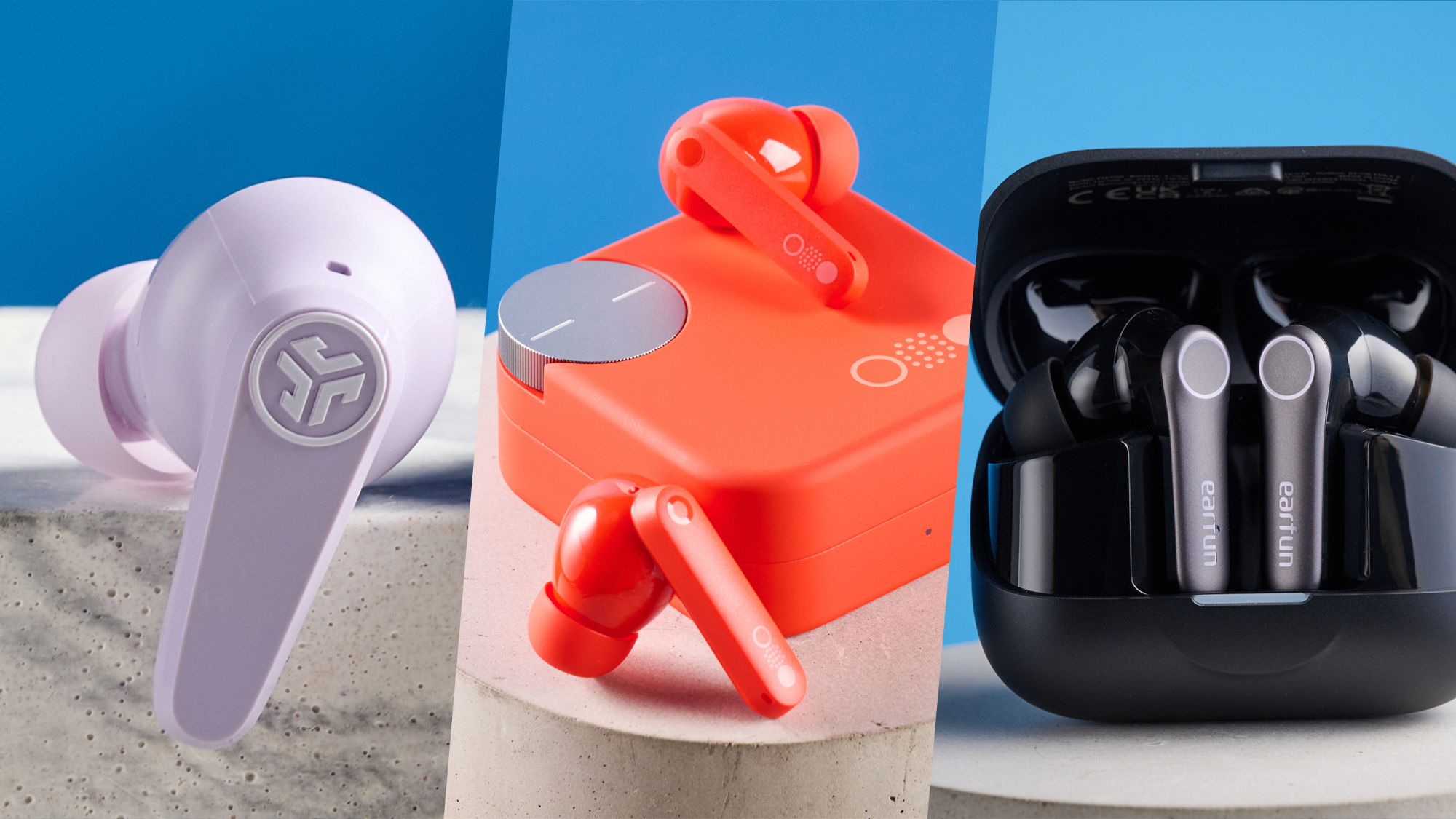Forget the gym — build a stronger chest and arms with this 5-move dumbbell workout
Five moves to build muscle, no gym required
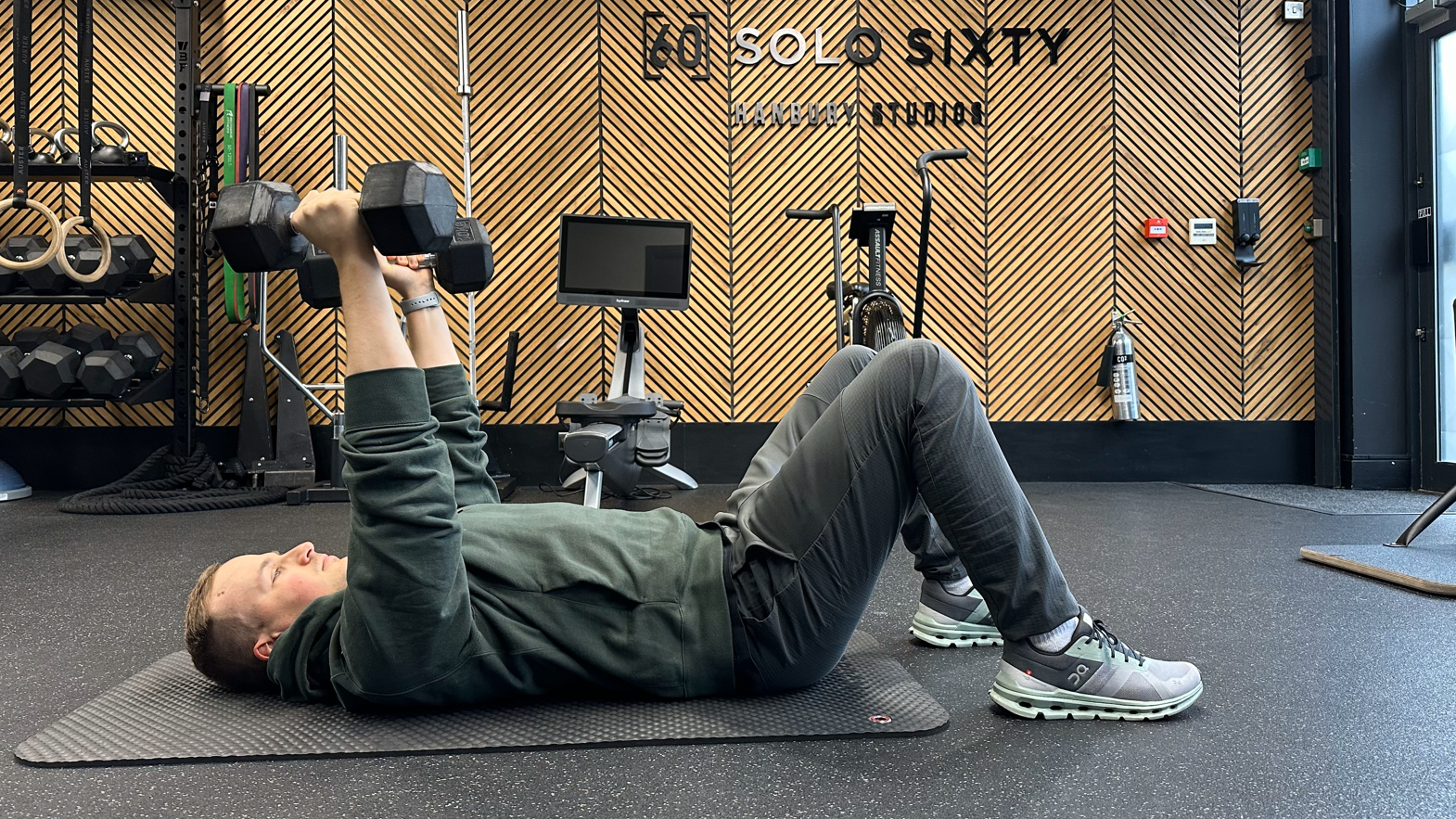
If you usually work out at the gym, you'll know that a lot of people target their upper body with staple moves like bench presses. However, that's not the only way to strengthen your arms, chest, shoulders, and back, as this five-move dumbbell workout shows.
All you need to get started is some fixed-weight dumbbells or a set of adjustable dumbbells. Adjustable weights cost more initially, but you can increase the load as you get stronger, rather than buying a new set of standard weights, which also makes them easier to store.
Don't worry if you're new to resistance training or haven't tried some of these exercises before. We asked personal trainer Ollie Thompson to design a short routine and guide you through each move with some useful tips to improve your form.

Ollie Thompson is a London-based personal trainer with over 10,000 hours of coaching under his belt. His sessions equip clients with fitness and well-being strategies to regain control of their health, thrive with high energy, prevent burnout, and develop a strong, robust, and pain-free body that’s built to last.
How to do this five-move upper-body workout
Thompson has put together a routine that'll target "all major muscle groups in the upper body: chest, back, shoulders, arms, and core. All exercises can be performed with just a pair of dumbbells."
Although you're free to train in whatever way works best for your body, Thompson has a few suggestions. "Perform each exercise one at a time [and complete the target reps and set] or you could perform them in a circuit fashion," which is useful if you're short on time or want to use a set of lighter weights.
"In a circuit, I would recommend performing each exercise for 15 repetitions (15 on each side for the single-arm row), keeping the rest periods short, such as 15-30 seconds. Perform 4-5 total rounds with a 90-second rest between each," explains Thompson.
Alternatively, if you have the time for an extended session, do 3-4 sets of each exercise before starting on the next move. According to Thompson, "focus on executing each set well, challenging yourself with a weight that allows you to get close to muscular failure on each set."
Get instant access to breaking news, the hottest reviews, great deals and helpful tips.
Five-move upper-body workout exercises
Whichever way you choose to structure your workout, the most important thing is to do each exercise with the proper form. This will help ensure that you use the correct muscles and avoid accidentally injuring yourself, which is a particular concern when working with weights.
1. Dumbbell floor press

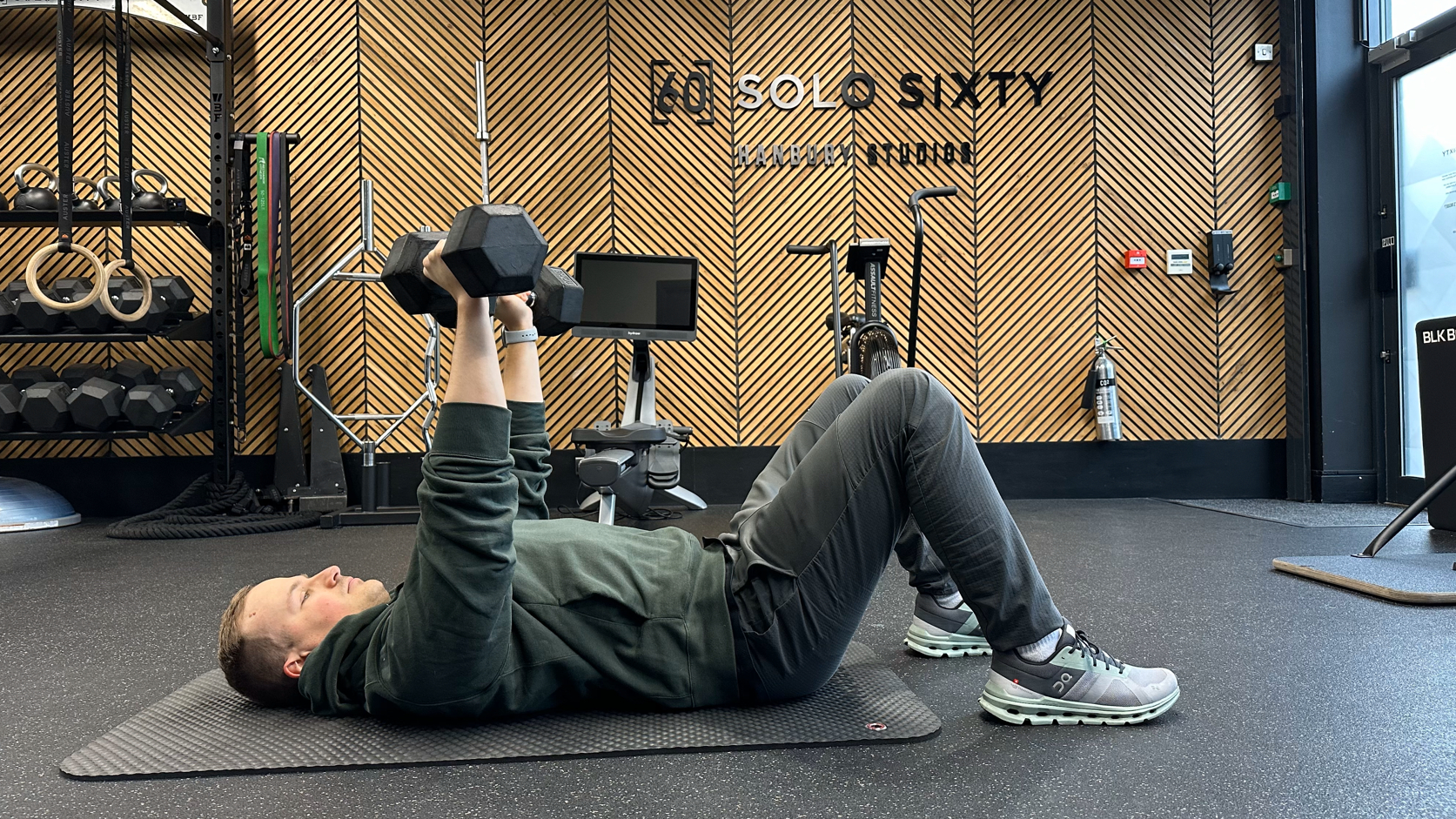
According to Thompson, you should "choose a weight that you can confidently achieve 10 reps; as you approach reps 14 and 15, they should be a real challenge."
- Sit on the ground with straight legs and lift the dumbbells onto your knees. Slowly roll back, ensuring you keep a firm grip.
- Lying flat on the ground, arch your lower back slightly while you push your chest towards the ceiling. Bring your shoulder blades together to engage the upper back muscles for extra shoulder stability.
- Keeping elbows at 45 degrees from your torso, press both dumbbells towards the ceiling.
- Following the same path back, control the descent, allowing elbows to tap the ground before pressing them back up towards the ceiling. That's one repetition.
- Aim to complete 3-4 sets of 12-15 reps.
2. Single arm 3-point dumbbell row

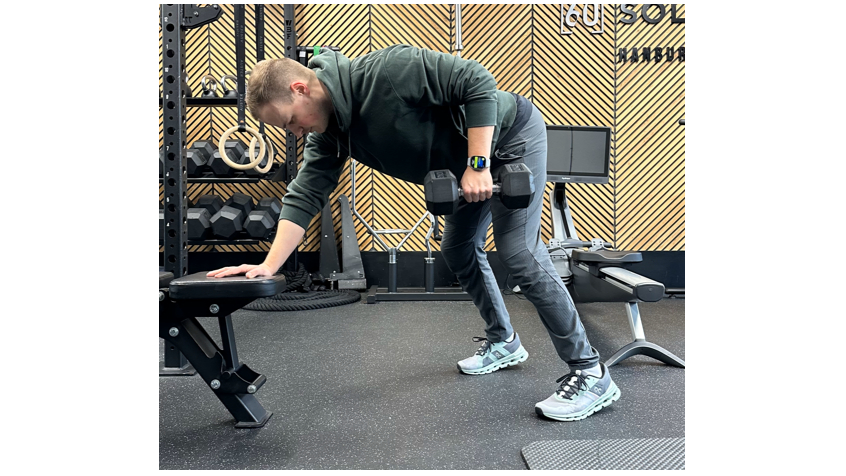
This compound exercise works muscles across your upper body and helps strengthen your core. Thompson notes that you should aim to stop your torso rotating or titling your helps to get the technique right.
- Stand tall with a single dumbbell a few steps back from a raised surface like a bench.
- Place the dumbbell to the side of the bench and move into a standing tabletop position with one hand on the bench. Using your free hand, grab the dumbbell and pull it up and slightly back towards the top of your hip bone.
- Control the descent, following that same path, allowing the dumbbell to travel towards the floor.
- As your arm straightens at the bottom position, you should be able to maintain a little tension in the shoulder, upper back, and core to resist rotating your upper back.
- Perform this exercise evenly on both sides; aim for 3-4 sets of 10-12 reps on the right and repeat on the left side.
3. Tall-kneeling biceps curl and press
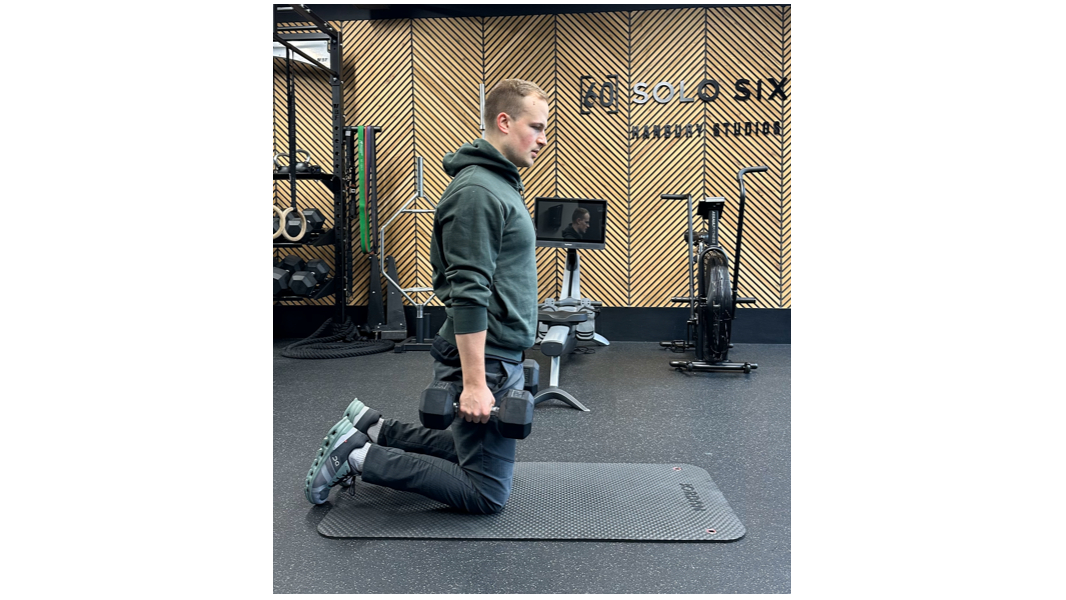
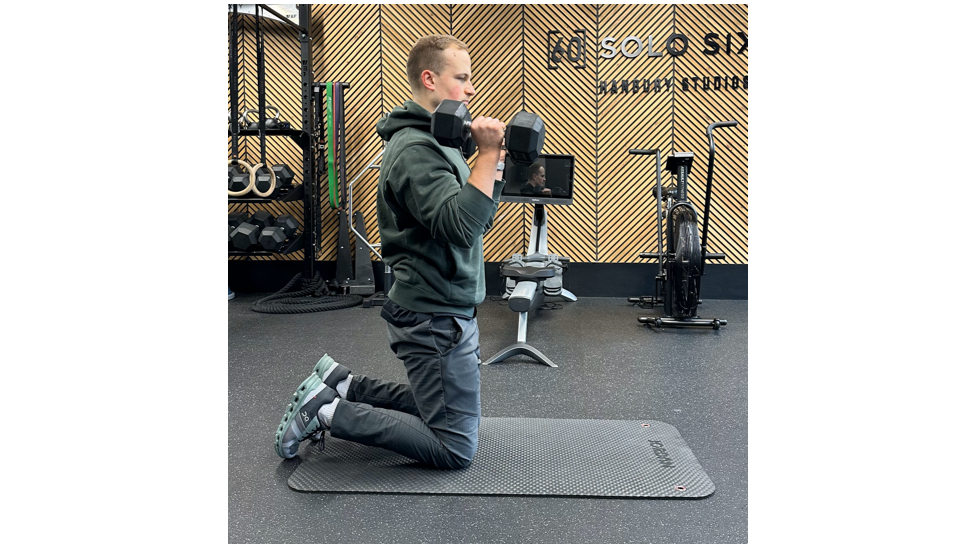

"You can perform this standing or sitting; I personally prefer tall-kneeling as I find it not only helps to prevent swinging and arching the back, it challenges the core more in this position," explains Thompson.
- In a tall-kneeling position with arms straight down by your sides, and thumbs against your outer thigh, biceps curl the dumbbells up until they reach shoulder level.
- Then, in one fluid motion, press both dumbbells up overhead, finishing with your biceps muscles close to your ears.
- Following that same path, control the dumbbells back down to the shoulders, then back down to your sides. That’s one repetition.
- Aim to complete 3 sets of 10-12 reps.
4. Skullcrushers

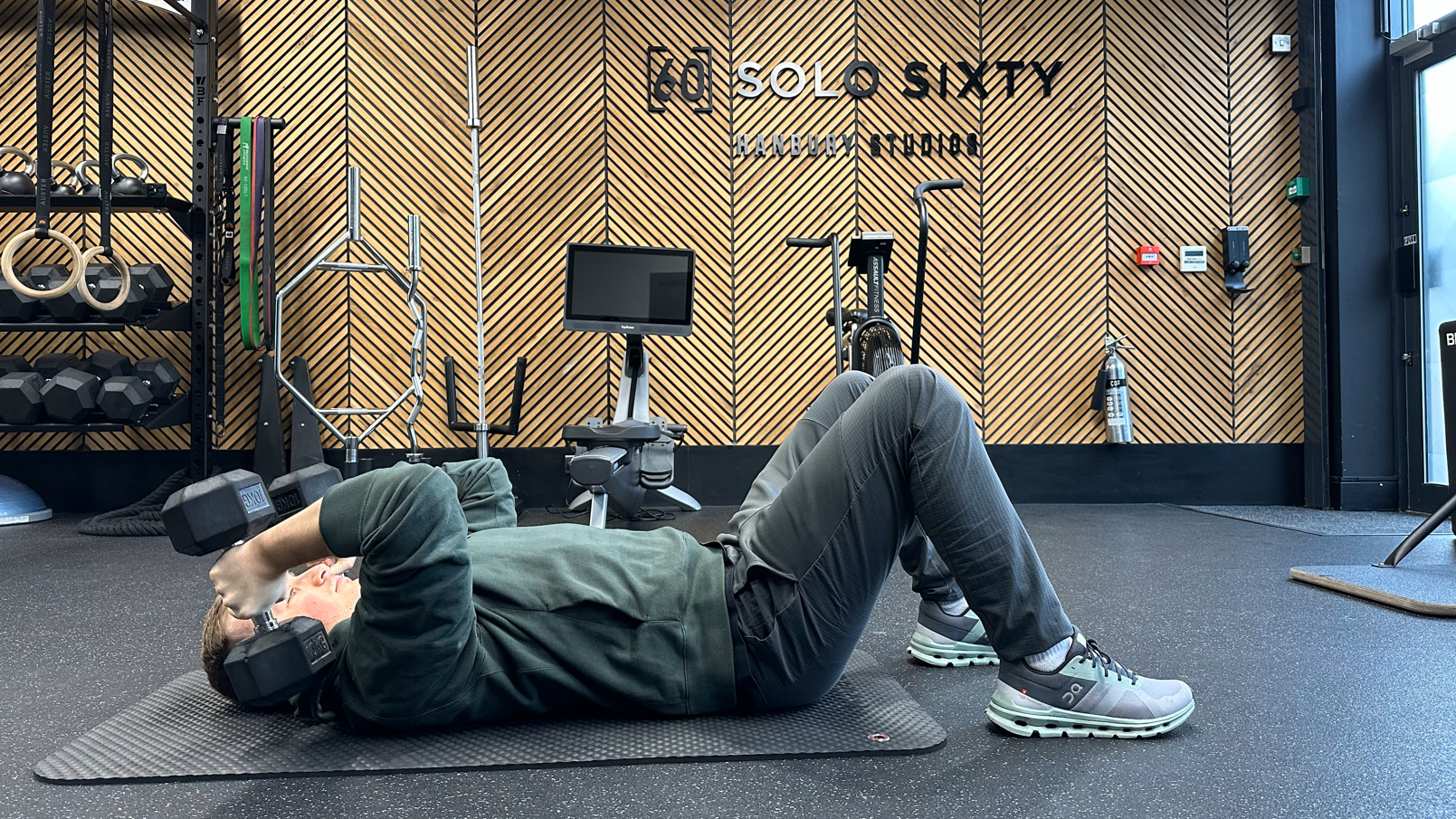
"This exercise isn’t as scary as the name. It’s one of the best exercises for your triceps on the back of your arm." Thompson notes that it's vital to keep control of the weights as "the more range of motion and control you can achieve throughout this move, the greater tricep engagement."
- Lay on your back holding the dumbbells with both arms up towards the ceiling with your wrists in a neutral position with palms facing each other.
- From here, in a controlled manner, bend at the elbow to lower the dumbbells both down to just outside your ears. Stop just before the weights hit the ground, or give them a gentle tap on the floor.
- Proceed to extend the arm at the elbow back into that straight arm position towards the ceiling. That's one repetition.
- Aim for 3 sets of 12-15 reps.
5. Dumbbell deadbugs
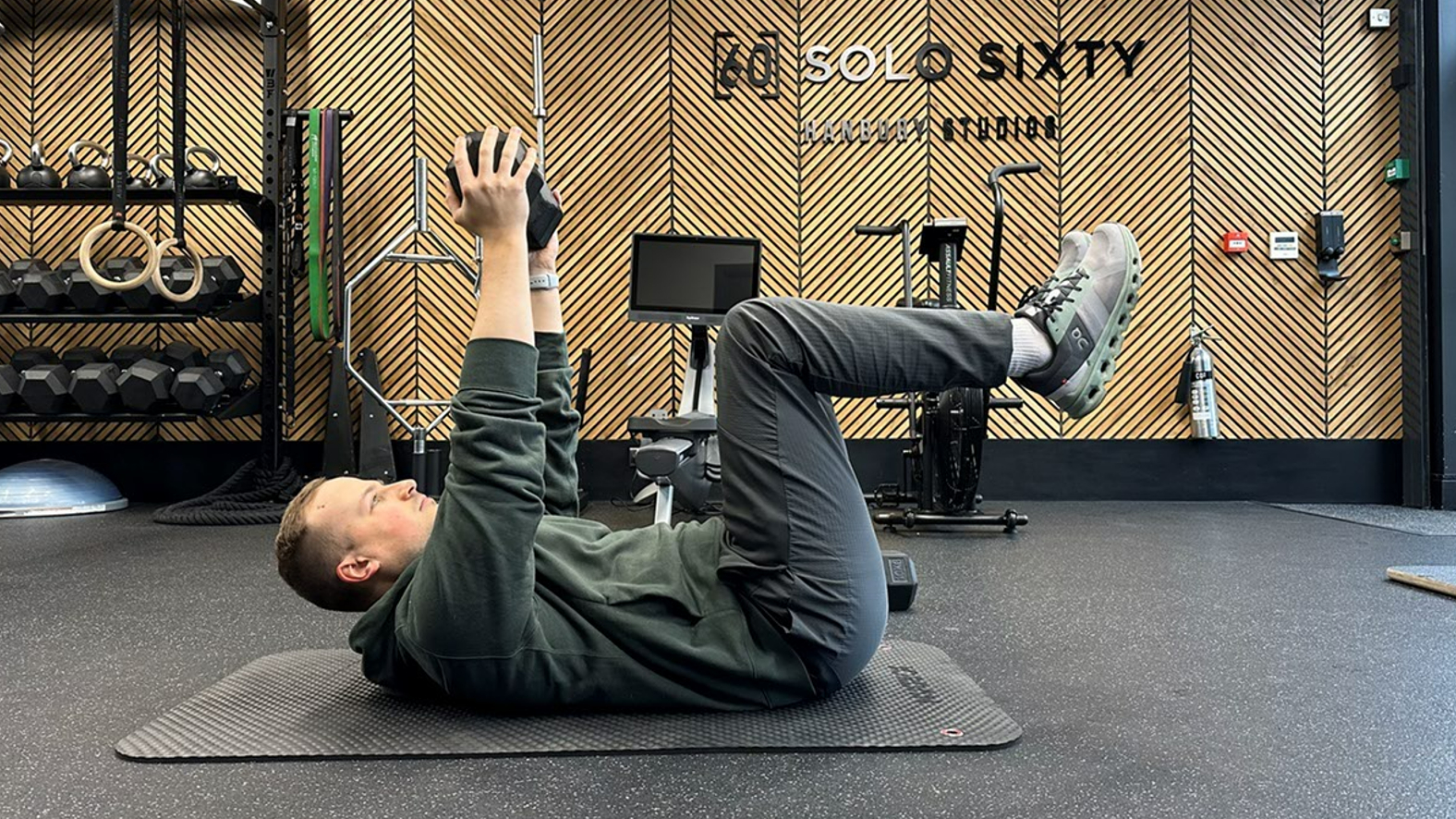

The aim of this exercise is to engage several muscles simultaneously. As Thompson explains: "The most important element of this move to really challenge your core muscles is to maintain contact between your lower back and the ground."
- Lie down on your back, gripping a single dumbbell with straight arms towards the ceiling.
- Reach the dumbbell up as high as you can, resulting in your head and upper shoulders leaving the ground slightly.
- With bent legs (knees stacked over our hips), drive your lower back hard into the ground and push your tailbone up off of the ground. Think about pushing your knees toward the ceiling. Only your mid and lower back should be in contact with the ground.
- Then, slowly extend each leg one at a time, returning to that starting bent leg position between each repetition.
- Aim to perform this exercise for either a total of 30 reps or 30 seconds, 3-4 times.
This is an effective routine for strengthening your back, chest, arms, and shoulders and you can increase the intensity by lifting a heavier weight as you get stronger (in line with progressive overload training) or doing more reps and sets of each move.
Thompson's circuit is also a great way to engage your midsection and strengthen your core, a section of mid-body muscle that connects your upper and lower body. If you want to target your core specifically, this abs workout for beginners is a great place to start.
More from Tom's Guide
- I tried this 8-move full-body dumbbell workout, and I felt stronger in just 25 minutes
- Chris Hemsworth’s 6-move dumbbell workout strengthens and defines your upper body — here’s how to do it
- 3 standing dumbbell exercises for building strong and defined shoulders

James is Tom's Guide's Buying Guide Editor, overseeing the site's buying advice. He was previously Fitness Editor, covering strength training workouts, cardio exercise, and accessible ways to improve your health and wellbeing.
His first job at as a sales assistant in a department store, and this is where James learned how important it is to help people make purchasing decisions that are right for their needs, whether that's a fountain pen to give as a gift or a new fridge for their kitchen.
James is an advocate for sustainability and reparability, and focuses his reviews and advice through that lens to offer objective insights as to whether a specific product or service will be right for your needs.
